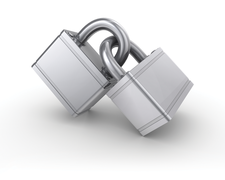File encryption with EncFS
Command Line – EncFS

© Lead Image © Marvin Ristau de, Fotolia.com
EncFS is an easy and effective CLI application for encrypting files that also allows for customization.
Linux has no shortages of solutions for file encryption. First released in 2001, EncFS [1] is one of the oldest solutions but remains one of the easiest to set up and use. It uses two directories: an unencrypted directory for dropping files into, and an encrypted directory that automatically creates encrypted copies of those files. Any further manipulation of the setup or files is done with the encfsctrl utility [2]. However, some insecure copies of EncFS are still in use, so be careful to get 1.9.5, the latest version, which fixes the vulnerabilities of earlier versions.
EncFS has several other advantages besides its ease of use. One is that because EncFS runs in userspace, using the FUSE libraries [3], ordinary users, not just root, can create its virtual filesystem. Additionally, running in userspace means that an encrypted volume can be administered by existing utilities such as Rsync and fsck. Similarly, standard backup utilities can back up only the EncFS-associated files that have changed.
EncFS can use both removable drives and cloud storage (see below). The volume key that is usually stored in the same directory as the encrypted data can be password protected and stored elsewhere, including on a removable drive or in the cloud for added security. Also, encrypted directories do not have any fixed size, growing as files are added or deleted instead of requiring a fixed space to be allocated. All these features add up to a CLI application that is almost as easy to use as a graphical interface.
[...]
Buy this article as PDF
(incl. VAT)
Buy Linux Magazine
Subscribe to our Linux Newsletters
Find Linux and Open Source Jobs
Subscribe to our ADMIN Newsletters
Support Our Work
Linux Magazine content is made possible with support from readers like you. Please consider contributing when you’ve found an article to be beneficial.

News
-
Parrot OS Switches to KDE Plasma Desktop
Yet another distro is making the move to the KDE Plasma desktop.
-
TUXEDO Announces Gemini 17
TUXEDO Computers has released the fourth generation of its Gemini laptop with plenty of updates.
-
Two New Distros Adopt Enlightenment
MX Moksha and AV Linux 25 join ranks with Bodhi Linux and embrace the Enlightenment desktop.
-
Solus Linux 4.8 Removes Python 2
Solus Linux 4.8 has been released with the latest Linux kernel, updated desktops, and a key removal.
-
Zorin OS 18 Hits over a Million Downloads
If you doubt Linux isn't gaining popularity, you only have to look at Zorin OS's download numbers.
-
TUXEDO Computers Scraps Snapdragon X1E-Based Laptop
Due to issues with a Snapdragon CPU, TUXEDO Computers has cancelled its plans to release a laptop based on this elite hardware.
-
Debian Unleashes Debian Libre Live
Debian Libre Live keeps your machine free of proprietary software.
-
Valve Announces Pending Release of Steam Machine
Shout it to the heavens: Steam Machine, powered by Linux, is set to arrive in 2026.
-
Happy Birthday, ADMIN Magazine!
ADMIN is celebrating its 15th anniversary with issue #90.
-
Another Linux Malware Discovered
Russian hackers use Hyper-V to hide malware within Linux virtual machines.

